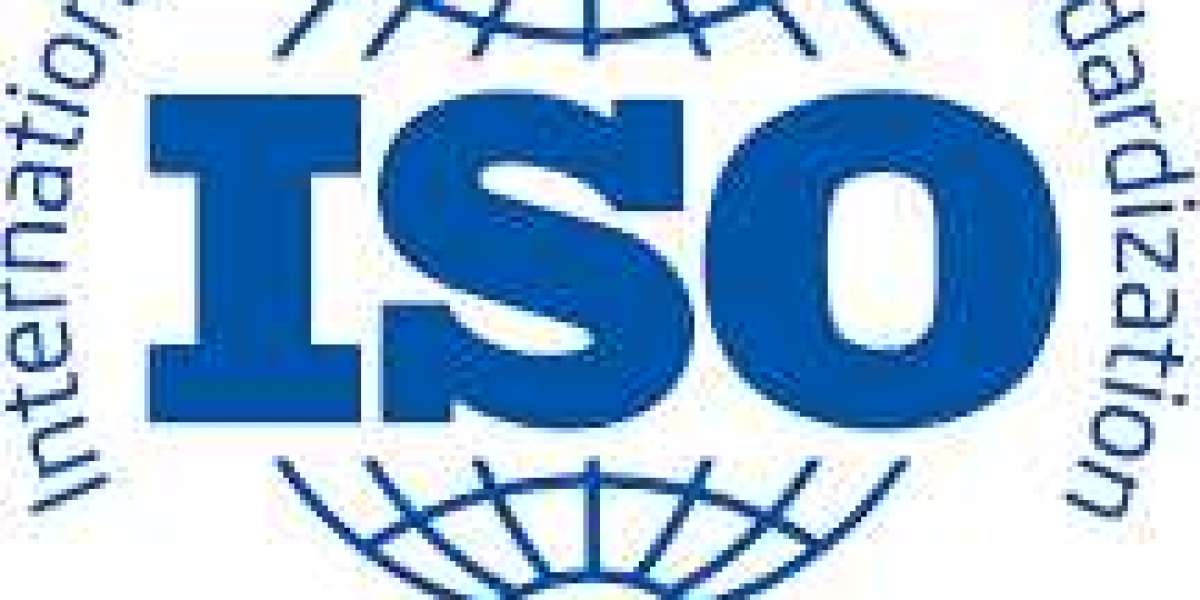Certification ISO 3834: Ensuring Excellence in Welding Quality
Introduction
ISO 3834 is an international standard that specifies the quality requirements for fusion welding of metallic materials. It provides a comprehensive framework for organizations to ensure that their welding processes meet the highest quality standards. Welding is a critical process in many industries, including construction, manufacturing, and automotive, where the integrity and strength of welded joints are paramount. By adhering to ISO 3834, organizations can demonstrate their commitment to quality, enhance their reputation, and gain a competitive edge in the market. This article explores the significance of ISO 3834 certification, the process of obtaining certification, the benefits it offers, and the role of continuous improvement in maintaining welding quality.
Significance of ISO 3834 Certification
ISO 3834 certification is significant for several reasons, primarily due to its focus on ensuring the quality and reliability of welded products. The standard provides a structured approach to welding quality management, which is essential for organizations aiming to meet customer requirements and regulatory standards.
Firstly, ISO 3834 ensures the consistency and reliability of welding processes. Welding is a complex process that involves various parameters, such as temperature, pressure, and material properties. Any deviation in these parameters can lead to defects in the welded joints, compromising the safety and performance of the final product. ISO 3834 provides guidelines for controlling and monitoring these parameters, ensuring that the welding process is consistent and reliable. This consistency is crucial for industries where the quality of welded joints directly impacts product safety and performance.
Secondly, ISO 3834 helps organizations meet regulatory and contractual requirements. Many industries have stringent regulations regarding the quality and safety of welded products. Compliance with ISO 3834 can help organizations demonstrate that their welding processes meet these regulations, reducing the risk of non-compliance penalties and product recalls. Additionally, ISO 3834 certification is often a contractual requirement in industries such as construction and automotive, where customers demand high-quality welded products. By obtaining ISO 3834 certification, organizations can meet these contractual requirements and gain a competitive advantage in the market.
Thirdly, ISO 3834 enhances the organization's reputation and credibility. Achieving ISO 3834 certification demonstrates an organization's commitment to quality and continuous improvement. This commitment can enhance the organization's reputation among customers, suppliers, and regulatory bodies. In an increasingly competitive market, ISO 3834 certification can serve as a differentiating factor, helping organizations attract and retain customers. Furthermore, ISO 3834 certification can open up new business opportunities, as many customers and partners prefer to work with certified organizations that adhere to recognized quality standards.
Fourthly, ISO 3834 supports the development of a skilled workforce. The standard emphasizes the importance of competent personnel in achieving welding quality. It provides guidelines for the qualification and training of welding personnel, ensuring that they have the necessary skills and knowledge to perform welding tasks to the required standards. By adhering to ISO 3834, organizations can ensure that their workforce is skilled and capable of delivering high-quality welded products. This focus on personnel competence contributes to overall organizational excellence and enhances the quality of the final product.
Process of Obtaining ISO 3834 Certification
Obtaining ISO 3834 certification involves a series of steps that help organizations establish, implement, and maintain a welding quality management system. These steps include conducting a gap analysis, developing a quality plan, implementing the quality management system, and undergoing an external audit.
The first step in obtaining ISO 3834 certification is conducting a gap analysis. This involves assessing the organization's current welding practices and identifying areas that do not meet the requirements of ISO 3834. The gap analysis provides a baseline for developing a quality plan and helps identify the necessary changes to achieve compliance with the standard. Organizations should involve key stakeholders, including welding engineers, quality managers, and production personnel, in the gap analysis to ensure a comprehensive assessment of current practices.
The next step is developing a quality plan. The quality plan should outline the organization's approach to meeting the requirements of ISO 3834, including the control of welding processes, the qualification of welding personnel, and the inspection and testing of welded joints. The quality plan should be aligned with the organization's overall quality management system and should include specific objectives and targets for welding quality. The plan should also identify the resources, responsibilities, and timelines required for implementation. Effective planning is crucial for achieving ISO 3834 certification and ensuring the quality of welded products.
Once the quality plan is developed, organizations should implement the welding quality management system. This involves establishing procedures and controls for welding processes, training and qualifying welding personnel, and conducting regular inspections and tests of welded joints. Organizations should document their welding processes and maintain records of inspections and tests to demonstrate compliance with ISO 3834. Implementation also involves ensuring that welding equipment and materials meet the required standards and are properly maintained. Effective implementation of the welding quality management system is essential for achieving ISO 3834 certification and ensuring consistent welding quality.
The final step in obtaining ISO 3834 certification is undergoing an external audit. An accredited certification body will conduct the audit to assess the organization's compliance with ISO 3834. The audit involves reviewing the organization's welding quality management system, inspecting welding processes, and evaluating the qualification and competence of welding personnel. The certification body will issue a certificate of compliance if the organization meets the requirements of ISO 3834. The audit process provides an independent verification of the organization's welding quality management system and demonstrates its commitment to quality.
Benefits of ISO 3834 Certification
Achieving ISO 3834 certification offers numerous benefits for organizations, including improved welding quality, enhanced customer satisfaction, cost savings, and access to new markets.
Improved welding quality is one of the primary benefits of ISO 3834 certification. By implementing a structured welding quality management system, organizations can ensure that their welding processes are consistent and reliable. This leads to fewer defects in welded joints, improved product performance, and increased safety. Improved welding quality also reduces the risk of product failures and recalls, enhancing the organization's reputation and credibility. Additionally, improved welding quality can lead to higher production efficiency, as fewer defects mean less rework and waste.
Enhanced customer satisfaction is another significant benefit of ISO 3834 certification. Customers demand high-quality welded products that meet their specifications and regulatory requirements. ISO 3834 certification demonstrates that an organization is committed to meeting these demands and delivering high-quality products. This commitment to quality can enhance customer satisfaction and loyalty, leading to repeat business and positive referrals. Additionally, ISO 3834 certification can help organizations build strong relationships with customers, suppliers, and partners, as it demonstrates their adherence to recognized quality standards.
Cost savings are also an important benefit of ISO 3834 certification. By improving welding quality and reducing defects, organizations can achieve significant cost savings. Fewer defects mean less rework, scrap, and waste, leading to lower production costs. Additionally, improved welding quality can reduce the risk of product failures and recalls, which can be costly for organizations. ISO 3834 certification can also help organizations identify and implement cost-effective welding practices and technologies, further enhancing cost savings. Overall, ISO 3834 certification can contribute to the organization's bottom line by improving efficiency and reducing costs.
Access to new markets is another key benefit of ISO 3834 certification. Many industries and customers require their suppliers to have ISO 3834 certification as a condition of doing business. By achieving certification, organizations can access new markets and business opportunities that may have been previously unavailable. ISO 3834 certification can also enhance the organization's competitiveness in existing markets, as it demonstrates their commitment to quality and continuous improvement. Additionally, ISO 3834 certification can help organizations meet regulatory requirements in different countries and regions, facilitating international trade and expansion.
Role of Continuous Improvement in Maintaining Welding Quality
Continuous improvement is a fundamental principle of ISO 3834 and is essential for maintaining welding quality over the long term. The standard encourages organizations to regularly review and improve their welding practices to achieve sustained quality improvements.
The first aspect of continuous improvement is regular monitoring and measurement of welding quality. Organizations should establish procedures for tracking welding performance, identifying trends, and assessing the effectiveness of welding processes. This includes collecting and analyzing data on welding defects, inspection results, and production processes. Regular monitoring and measurement help organizations identify areas for improvement and take corrective actions as needed.
The second aspect of continuous improvement is conducting periodic welding audits. Welding audits are systematic assessments of welding processes and quality within an organization. They help identify opportunities for improvement, assess the effectiveness of existing practices, and provide recommendations for further improvements. Welding audits should be conducted regularly to ensure that welding practices remain effective and aligned with the organization's goals.
The third aspect of continuous improvement is employee training and development. Engaging employees in welding quality efforts is crucial for achieving sustained quality improvements. Organizations should provide regular training and development programs to ensure that welding personnel have the necessary skills and knowledge to perform their tasks to the required standards. This includes training on new welding technologies, quality control techniques, and industry best practices. Employee engagement and participation in welding quality efforts can lead to more effective implementation of quality improvement measures and a culture of continuous improvement.
The fourth aspect of continuous improvement is management review and feedback. Top management should regularly review the organization's welding quality performance and the effectiveness of the welding quality management system. This includes assessing progress toward quality objectives and targets, identifying deviations, and taking corrective actions. Management reviews provide an opportunity for top management to demonstrate their commitment to welding quality and to ensure that the welding quality management system remains effective and aligned with the organization's goals.
Conclusion
certification iso 3834 is a critical standard for ensuring the quality and reliability of welding processes. By obtaining ISO 3834 certification, organizations can demonstrate their commitment to welding quality, enhance their reputation, and gain a competitive edge in the market. The process of obtaining ISO 3834 certification involves conducting a gap analysis, developing a quality plan, implementing the welding quality management system, and undergoing an external audit.








